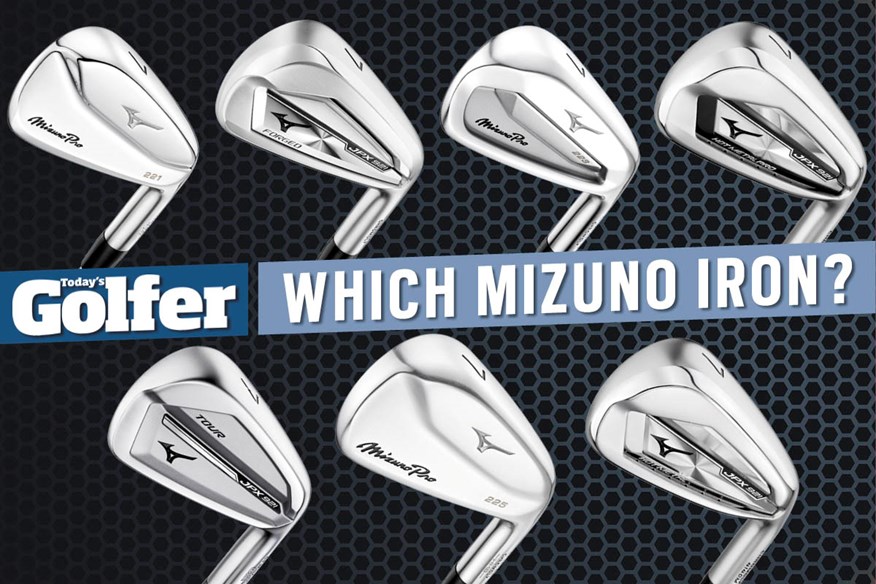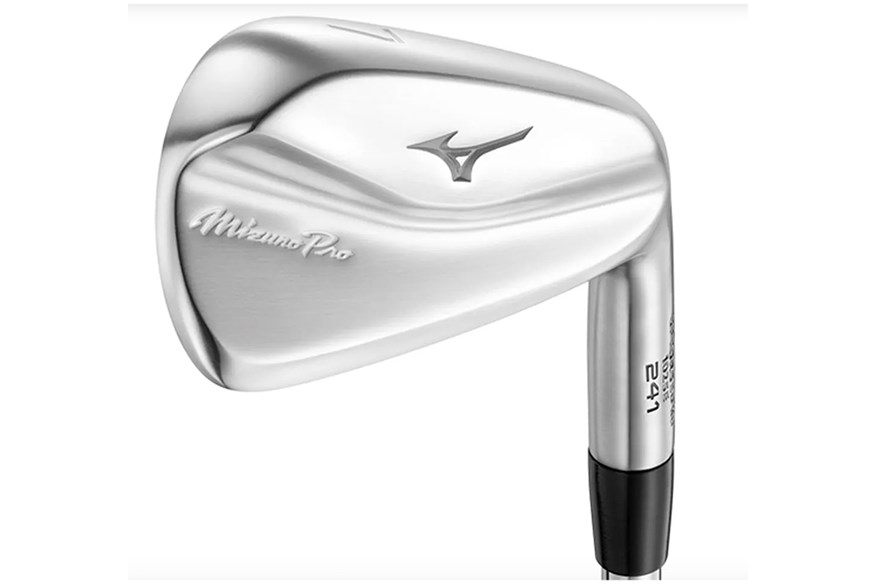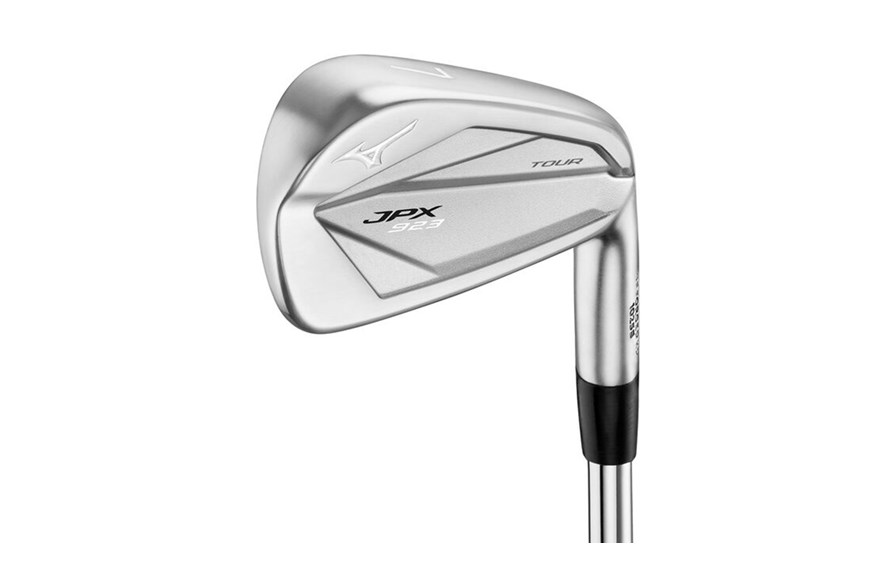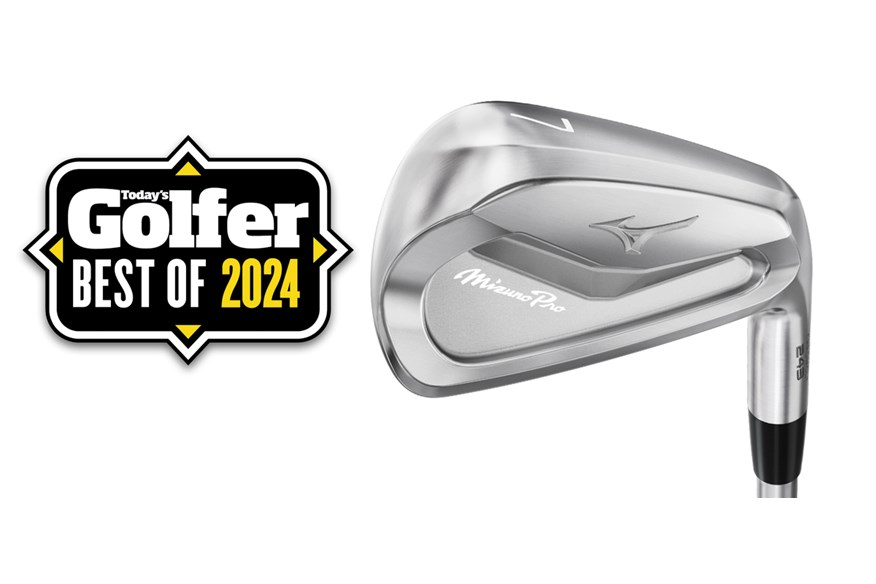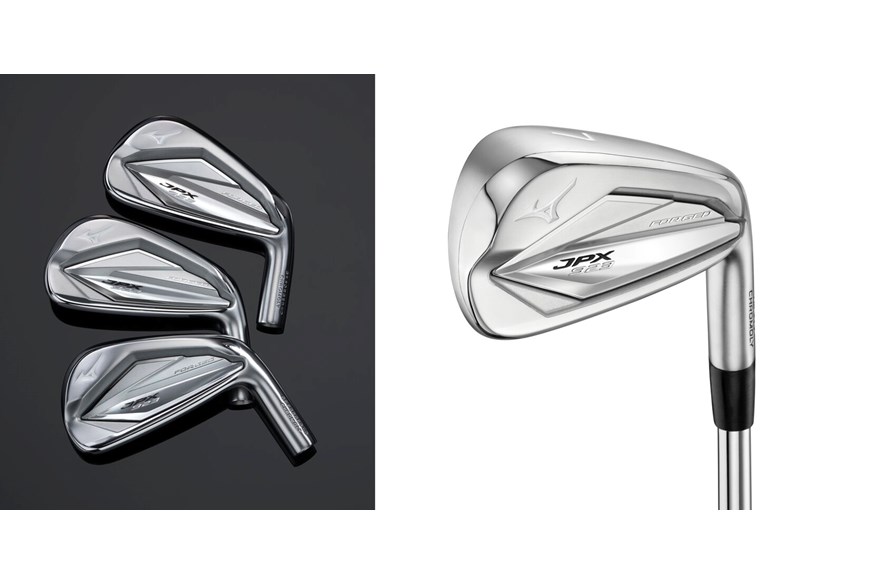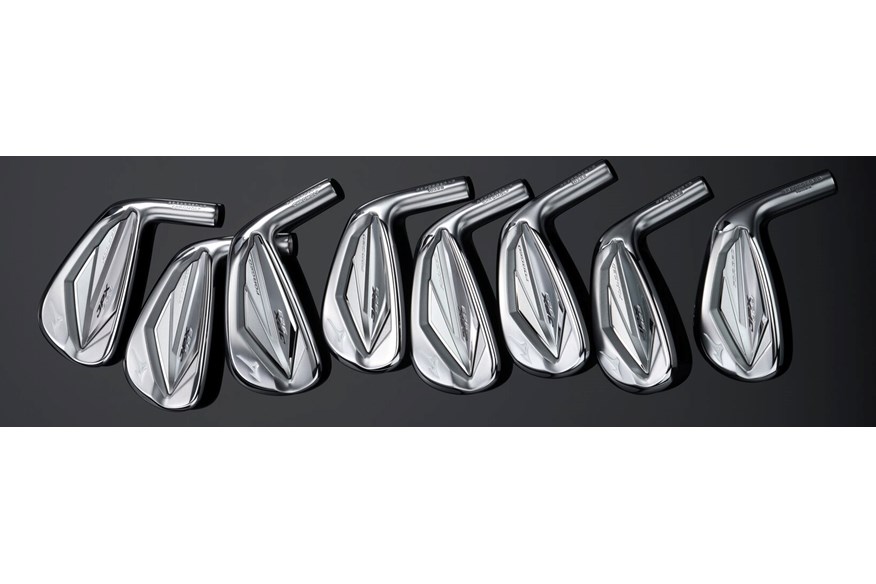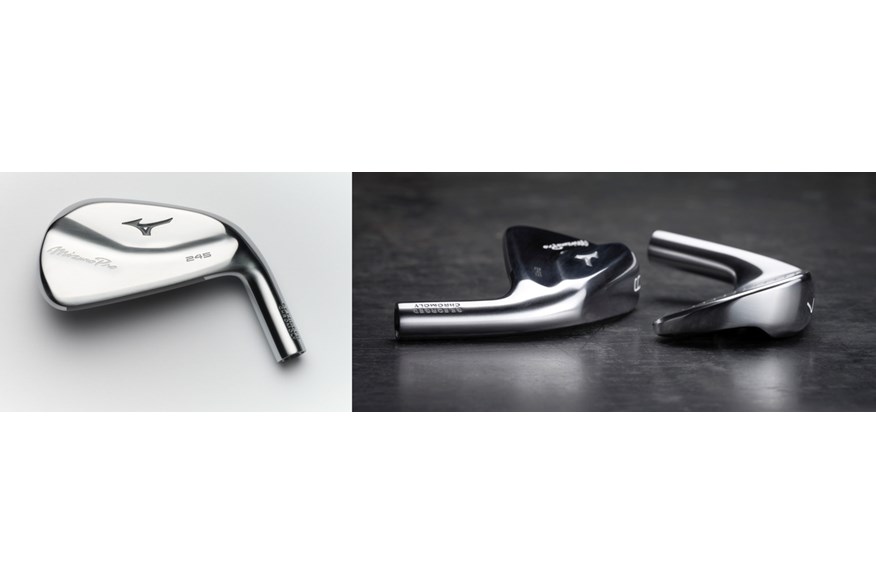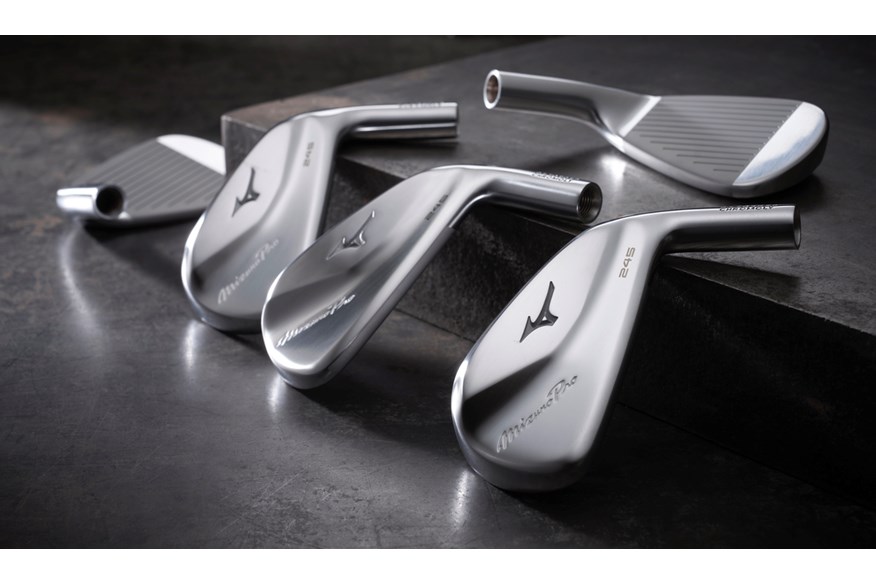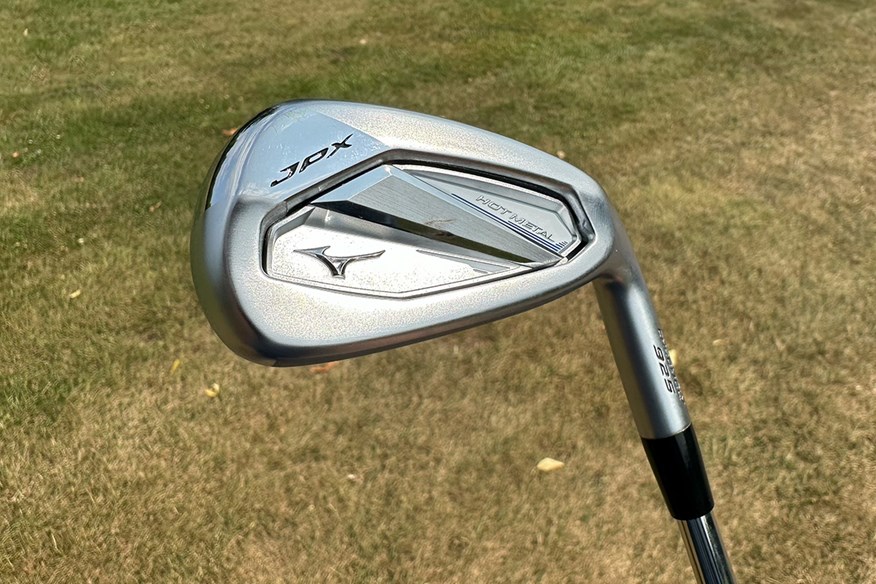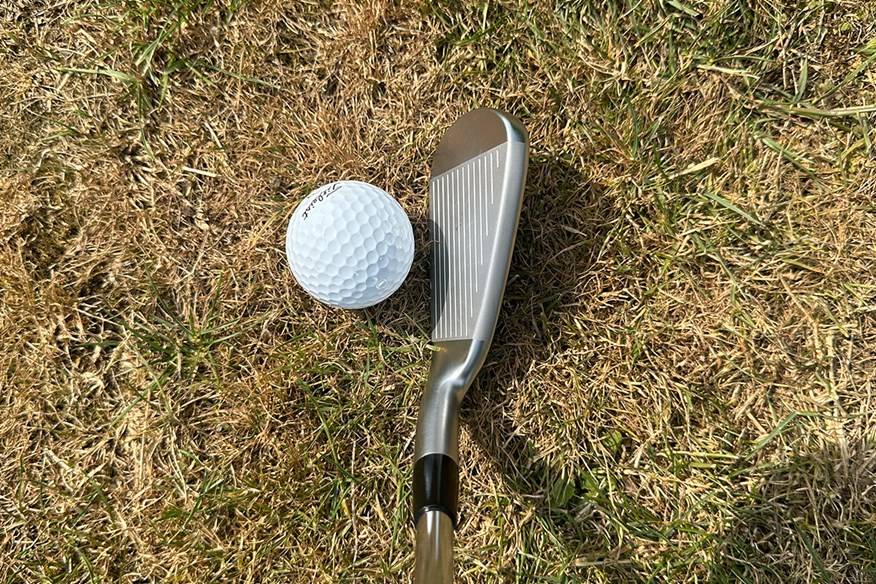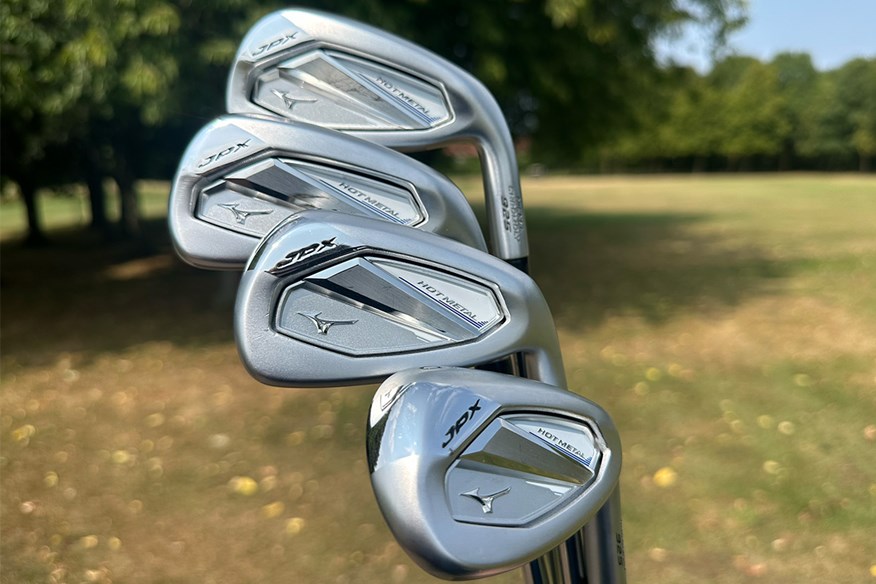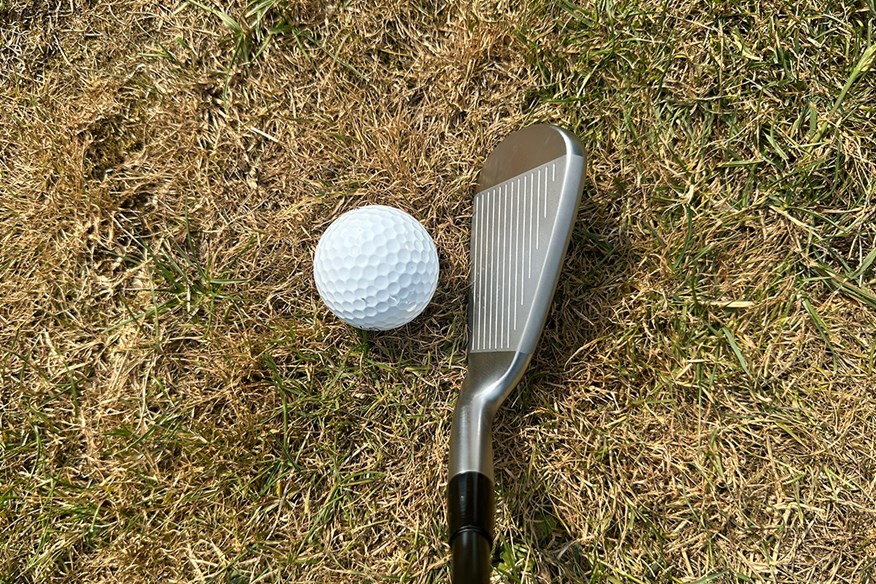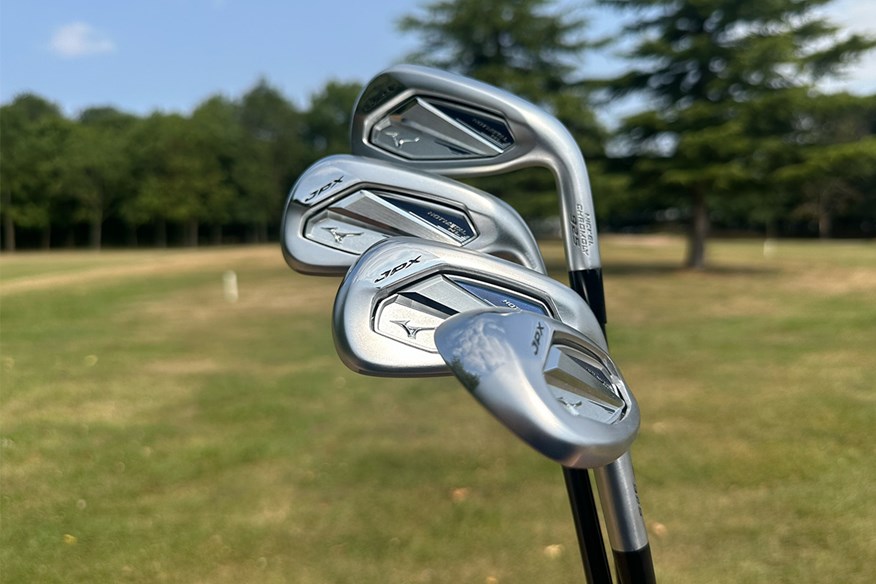Forged or cast? Let me help you decide which are the Best Mizuno Irons in 2025
Last updated:
What are the best Mizuno irons for your game? This is your guide to each iron in the Mizuno range, who they’re aimed at, and how they performed when tested by our pro.
The best Mizuno irons have also been some of the best golf irons available for decades, with many golfers believing the Japanese brand’s offerings are simply unmatched in terms of looks, feel, and quality.
Mizuno’s best blade golf clubs have long been the preferred choice of many elite players, but Mizuno caters to all types of golfers, with a range of irons for different ability levels and handicaps. Today, our test results highlight how Mizuno also make some of the best irons for mid-handicaps and even some of the most forgiving irons for high handicappers.
Whether you’re an aspiring tour professional, a beginner, or a regular slower-speed club golfer, there’s a Mizuno iron out there for you. Here’s my rundown of how to choose the best Mizuno iron for your game.
Best Mizuno Irons – Jump to:
Best Mizuno Irons at a glance:
Best Muscleback Blade: Mizuno Pro 241 – View Offer
Best Tour Iron: Mizuno JPX923 Tour – View Offer
Best Players’ Iron: Mizuno Pro 243 – View Offer
Best Hollow Body Players’ Distance Iron: Mizuno Pro 245 – View Offer
Best Cavity Back Players’ Distance Iron: Mizuno JPX923 Forged – View Offer
Most Forgiving: Mizuno JPX925 Hot Metal – View Offer
Best for Slower Swing Speeds: Mizuno JPX925 Hot Metal HL – View Offer
What type of iron do you need?
Irons come in an array of styles and are generally broken down into categories, each different style suits a distinct capability of golfer, so you must pick the right category of iron to suit you. Mizuno has an enviable reputation for creating some of the best players’ irons in the business, but the categories you’re most likely to come across are blades/muscleback, players’ irons, players’ distance irons, mid-handicap/game improver irons, and high handicap or super game improver models. Here’s how to decide which best suits you.
Blades/Musclebacks
Blades have smaller heads with narrower toplines and soles, they’re designed to offer great looks, feel, and ultimate control and workability. Pro’s who use blades like them as they’re able to shape shots without having to change their swing. Blades typically have less hosel offset so the center of gravity is not as far back, so even though most blades have more loft (players who use them don’t crave more distance) they don’t necessarily flight shots shots higher.
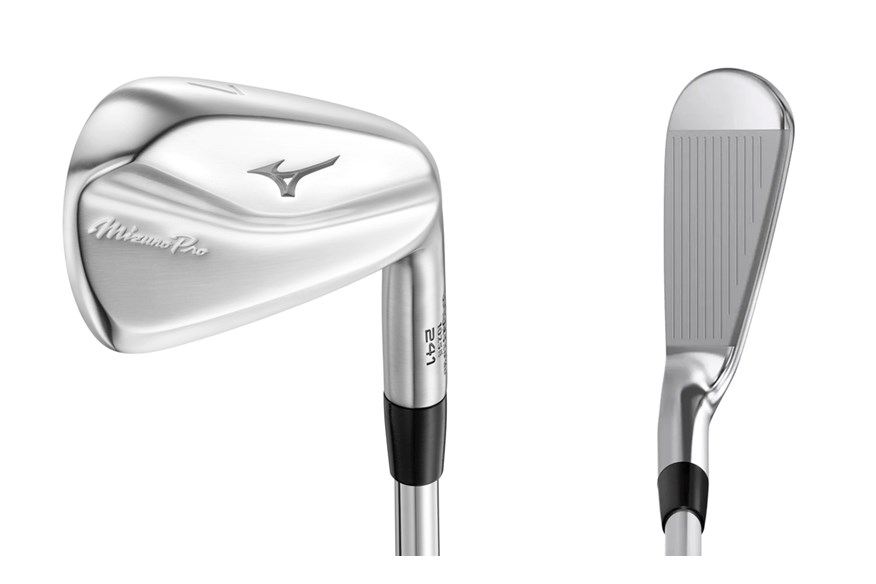
Blades will typically have weaker, traditional lofts (34° or even 35° for a 7-iron) and produce higher spin but less distance than other types of iron. Thanks to the smaller head and more forward CG (center of gravity) the best blades are always the least forgiving irons you can buy. Mizuno produces one muscleback blade the Pro 241.
Players’ Irons
Players’ irons are typically aimed at low handicappers, elite golfers, and many tour pros choose models from this category. Expect similar characteristics to blades (small heads, weak lofts, nice looks) but with a shallow cavity back or modern hollow body with a fraction more forgiveness.
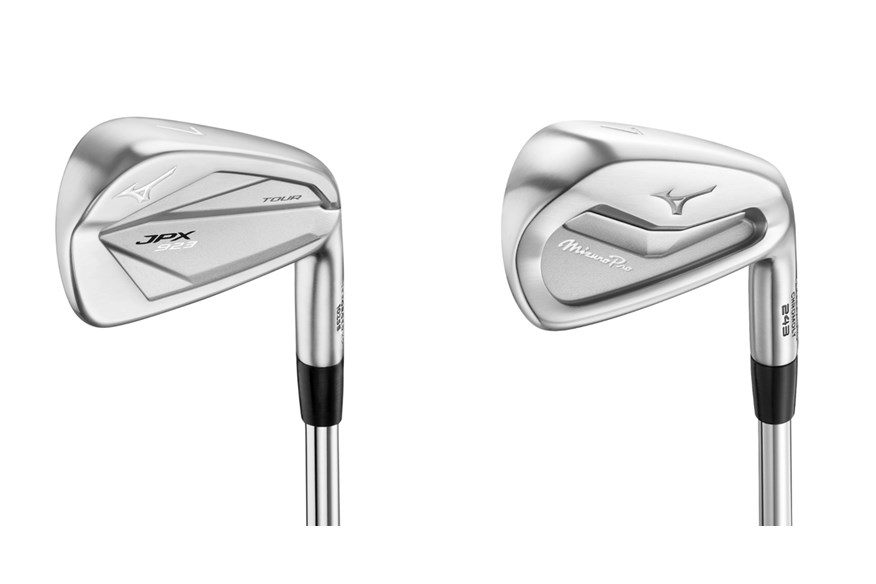
Golfers should not be buying in this category if they need to keep an eye on distance, if you do then players’ distance irons should be the category you’re looking at. If you strike your irons consistently well and don’t need much help with distance or forgiveness, the best players’ irons could be an option for you. Make no mistake, though, there are far more forgiving and distance-boosting irons available.
Mizuno makes two players’ irons both of which are forged, the Pro 243 and JPX923 Tour.
Players’ Distance Irons
Callaway effectively started what is today a hugely popular Players’ Distance Iron category back in 2014 when they unveiled their first Apex model that teamed a forged head, with cavity back performance and a stronger loft. Decent club golfers fell head over heels in love with the idea, and today the category has evolved to include lots of hollow body, thin/fast face constructions.
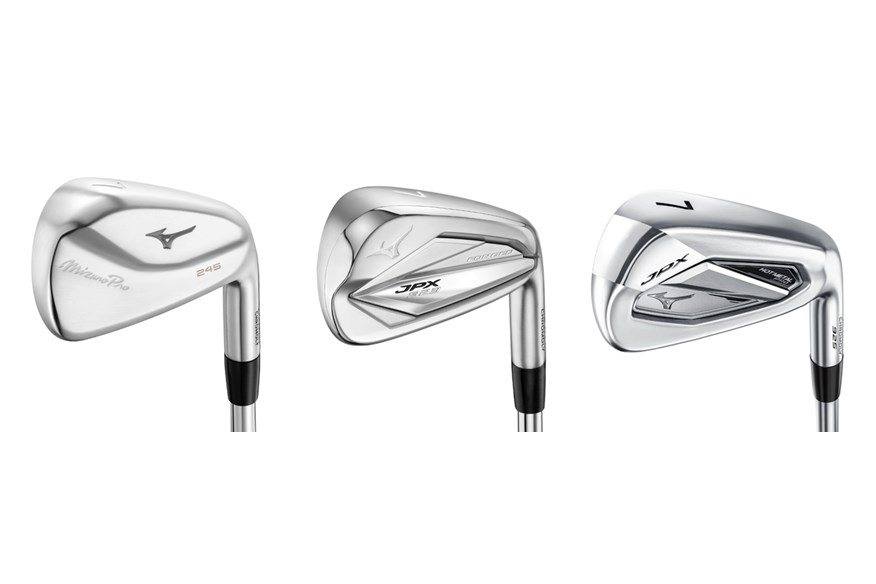
The category is spearheaded by the popular TaylorMade P790. Players’ distance irons pack a lot of distance and forgiveness potential into head shapes that look great. Expect stronger lofts than players’ irons and typically you won’t want to be playing off much more than a 12 -14 handicap to think about playing models in this category.
The best players’ distance irons will typically create more speed and distance than blades and players’ models, and while they may not generate quite as much spin, their high launch helps shots hold greens. Mizuno makes the hollow body Pro 245, cavity back JPX923 Forged, and JPX925 Hot Metal Pro all of which sit within this category.
Mid-Handicap/Game Improver Irons
Without question, the mid-handicap iron category is the biggest and consequently most lucrative in the game as this is the area most golfer’s games sit within. Game Improver Irons will never be quite as sleek as players’ or players’ distance models but they are hugely versatile and offer great distance and forgiveness potential.
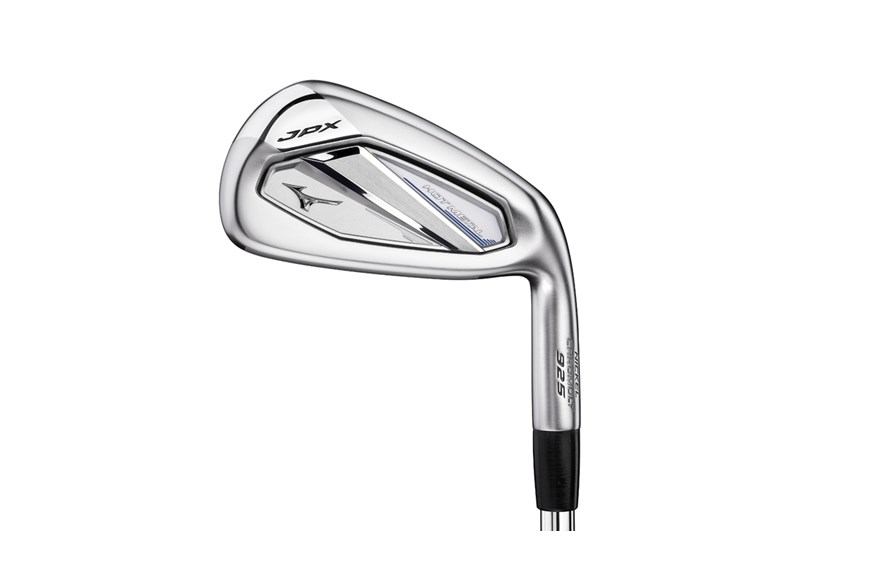
Most golfers will notice how cavity-back game improver irons don’t sound or feel quite as nice as a one-piece forged blade or players’ iron but the attraction here is when shots are sprayed across the face of the iron golfers can still expect reasonable results.
Mizuno doesn’t have nearly as big a reputation for making cast game improver irons as they do with their forged players’ models but their models are usually very comparable to the likes of the Ping G430, TaylorMade Qi, and Callaway AI Smoke. Mid-handicap irons usually fall into the hands of golfers with a handicap of 8 or above, they’re good for golfers who value extra forgiveness rather than looks, and the Mizuno JPX925 Hot Metal sits within this category.
High-Handicap/Moderate Swing Speed Irons
These irons tend to be the most forgiving, with their bigger, chunky heads being packed with technology to make it as easy as possible for golfers of all abilities to get the ball airborne and heading in the right direction. They won’t win any awards purely on looks or feel, but if you struggle to hit irons well, the best high-handicap irons could help you.
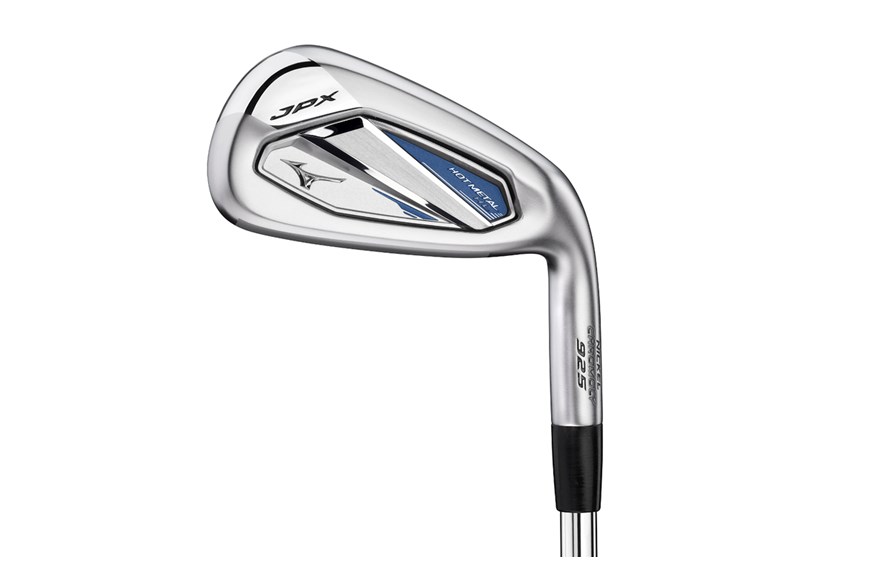
In today’s market higher lofted High Launch irons are trending up. These models are designed for more average-speed players to help flight shots for optimal spin, height, descent angle and carry distance. Mizuno’s JPX925 Hot Metal HL iron fits within this category.
Best Mizuno Irons 2025
Compared to other blades the 241 has a micro-thin copper coating under its chrome finish which Mizuno says gives the feel and matches the production process of their legendary irons from the 80’s.
Interestingly in terms of data even though the model has the same 7-iron loft as the JPX923 Tour iron, thanks to having zero ball speed protection tech the 241 produced 3.7mph less speed and 4 yards less carry distance on average. The model also hit shots into an area 28% bigger than the JPX923 Tour, which hopefully should spell out that golfers need to think carefully about plumping for this model.
Very few golfers ever need a set of muscleback blades, only 10% of tour pros chose them for their own game, but if you find yourself trying to choose between the 241 and JPX923 Tour focus on the type of shots you like hitting.
Mzuno says thanks to the slightly shorter blade length and lack of any cavity back or perimeter weighting the 241 typically falls into the hands of elite golfers who like to shape approaches into greens. Where the JPX923 Tour is a better fit for modern golfers who like to hit lots of straight shots.
Read our full Mizuno Pro 241 review.
Pros
- Just look at them
- Fantastic feel
- Timeless classics
- Decent distance for traditional lofts
Cons
- Very little forgiveness
- Need good speed and strike to use them effectively
| Category: | Muscleback Blade |
| Handicap range: | Four and below |
| Construction: | Forged from a single piece of 1025E HD Mild Carbon Steel |
| 7-Iron loft: | 34° |
Mizuno’s website has the Tours down as a good match for 0 - 4 handicap golfers, they’re more workable (so less forgiving) than the Pro 243, which should say almost everything you need to know about this elite players’ iron.
In 2025, really good golfers are likely to find themselves choosing between the Tour and the beautiful new Pro 243. Our test data shows a fraction more launch, spin, shot height, and descent angle in favor of the 243 which most golfers should be swayed by.
If you still find yourself drawn to the JPX923 Tour, the model just turned two, so it’s highly likely there will be replacements appearing towards the back end of the year or early into 2025.
If you’re good enough to play irons at this level it’s worth noting going any further up the Mizuno line-up means you get heads made from springy chromoly steel, which absolute purists would argue isn’t quite the same as the 1025 E material, that gave birth to the brands “nothing feels like a Mizuno” tagline.
Read our full Mizuno JPX923 Tour iron review.
Pros
- Great looks and feel
- Strong option for elite ball-strikers
- Shots stop quickly on the green
Cons
- Less forgiving than most cavity backs
| Category: | Player’s Iron |
| Handicap range: | Four and below |
| Construction: | Forged from a single piece of 1025E HD Mild Carbon Steel |
| 7-Iron loft: | 34° |
But thanks to the 7-iron loft of the 243 being quite strong in the players’ iron market I would recommend seeing the Pro 243 as an alternative to irons like the Titleist T150 and Srixon ZX7 MK II rather than scrapping weaker lofted and more tour-focused models like the Titleist 620 CB.
Compared to other players’ irons our 2024 test data doesn’t have the 243 ripping up any trees in terms of performance but our test pro was adamant, thanks to the looks, feel, and feedback the model had to feature among our five award-winning players’ irons of the year.
To get the best out of this compact head you’re going to need to be a consistent ball striker, and I love the way it has a slightly flatter appearance at address which really good golfers enjoy as it eliminates the feeling shots will be smothered left of their target (for a right-hander).
If you insist your game is best served by an elite-level forged cavity back iron, the Pro 243 is an absolute beauty. If you’re drawn to this model make sure you also take the time to consider how it compares to Mizuno’s brilliant hollow body Pro 245.
Although our test pro didn’t see huge amounts of difference between the pair some golfers will find the stronger loft, fast face, and more forgiving 245 head will be more playable on the golf course.
Read our full Mizuno Pro 243 iron review.
Pros
- Excellent sound and feel
- Perfect for combo sets
- Lovely head shape and profile
Cons
- When did Mizuno irons become so expensive?
| Category: | Players’ Iron |
| Handicap range: | Six and below |
| Construction: | 4 - 7 iron one piece forged 4120 Chromoly steel, 8 – GW forged 1025 E mild carbon steel |
| 7-Iron loft: | 32° |
The Forged is a brilliant mix of what lots of reasonable club golfers look for in a set of irons, so you have to see this lively chromoly steel head as a good one-piece fast-face forged alternative to the likes of the hollow body TaylorMade P790, Titleist T200 and Ping i530.
Our data has the Forged down as Mizuno’s fastest and longest one-piece forged iron, well worth bearing in mind if modern hollow body or multi-material constructions aren’t your thing.
Expect a really good-looking head shape with tiny amounts of offset, a forged feel (albeit from more lively chromoly steel), and sound as well as decent amounts of power plus a good degree of forgiveness for when shots don’t impact the center of the face.
If you get fitted for a set make sure you hit the cast JPX923 Hot Metal Pro too. Its stronger loft will launch and fly lower with a shallower descent angle but you are likely to see more ball speed and distance, so make sure you gauge which gives you the best chance of scoring on the golf course.
Thanks to Mizuno’s brilliant array of shaft options (at no upcharge) the Forged can be dialed into suiting a wide audience of golfers’ abilities and swing speeds.
Read our full Mizuno JPX923 Forged review.
Pros
- Good distances
- Lovely feel and head shape
- A modern players' distance iron that doesn't have a hollow body
Cons
- Many golfers will be more seduced by the blade-like look of the Pro 245
| Category: | Players’ Distance Iron |
| Handicap range: | 12 and below |
| Construction: | Forged from a single piece of 4120 chromoly steel |
| 7-Iron loft: | 30° |
I’ve heard it said many times before that the 245 is utterly gorgeous which justifies why the model draws in huge amounts of golfers who put a premium on traditional-looking irons rather than funked-up, weight-adorned modern alternatives.
The 245 is an iron for golfers looking to make the jump from a bigger mid-handicap iron into the players' distance iron arena, and wanting to do it without compromising on ball speed or distance. Thanks to the lofts and hollow body construction this model is a direct rival to the TaylorMade P790, Titleist T200, Ping i530, and PXG 0311 P GEN6.
If the players’ distance iron arena is where you’re looking, at £230 a club (that’s £1610 for a 7-piece set) you also have to consider the JPX923 Forged and Hot Metal Pro as all three are aimed at a similar audience.
The Pro 245 has a hollow body multi-material construction which will typically launch shots a little higher with less spin. The JPX923 Forged gives a full forged feel and sound, whereas the cast Pro is significantly less expensive for a 7-piece set.
Read our full Mizuno Pro 245 iron review.
Pros
- Lots of tech for distance and forgiveness
- Players’ distance irons don’t come much better looking
- Great sound and feel
Cons
- An expensive option
| Category: | Hollow body Players’ Distance Iron |
| Handicap range: | 12 and below |
| Construction: | Forged 4135 chromoly hollow body with cast 431 stainless steel back |
| 7-Iron loft: | 30° |
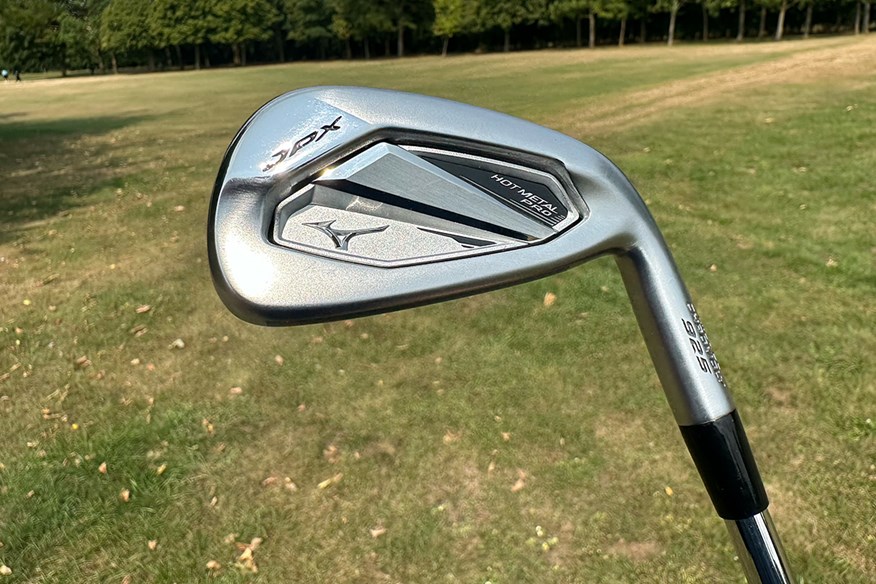


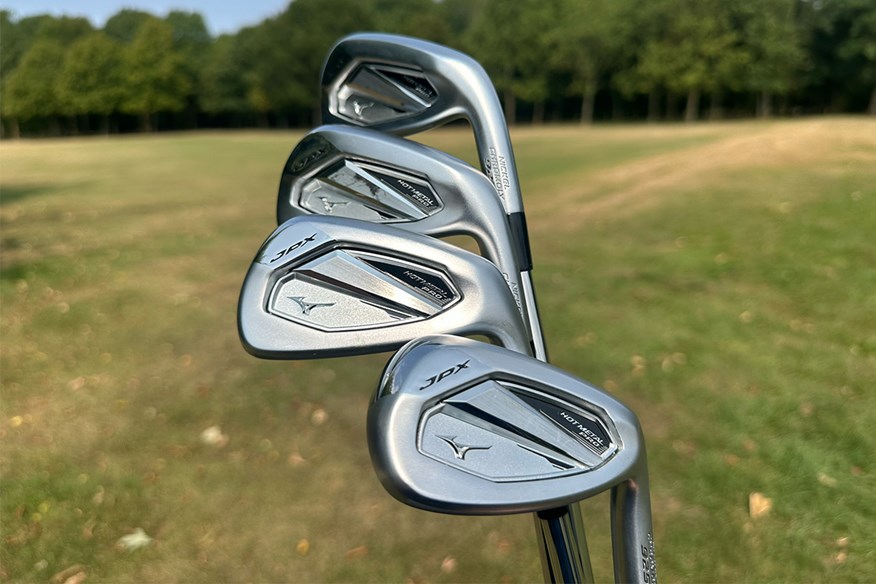
Look carefully below at the difference in backspin, height, and descent angle numbers between the Hot Metal Pro and Hot Metal HL as the extra loft of the HL added 525 rpm more spin, a yard more peak height, and a steeper descent angle (1.4°), which for average speed golfers will flight shots for more distance and increased stopping power.
Mizuno refers to the Pro as a ‘players speed cavity’ that’s designed for low to mid-handicap players, so the model should not be a serious option for game improvers looking for a super forgiving iron set-up. At 80.9 mm the blade length of the Pro is 4.5 mm shorter than the mid-handicap JPX925 and 5.7mm shorter than the more moderate speed mid to high handicap HL, which for a select few will aid shot shaping but also reduce forgiveness.
Read our full Mizuno JPX925 Hot Metal Pro review.
Pros
- Huge distance
- Nice feel and sound for a cast head
- Decent price point
Cons
- Strong lofts may be hard to launch for slower swings
- Not forged
| Category: | Players’ Distance Iron |
| Handicap range: | 14 and below |
| Construction: | Cast 4335 Nickel Chromoly Steel |
| 7-Iron loft: | 28.5° |
Where in the past there’s been a serious reason to convince golfers to spend their money with Mizuno rather than opting for a TaylorMade Qi, Callaway Ai Smoke, or Ping G430 it’s getting harder and harder to put the Mizuno models in front of the competition. Especially so as the model is cast from springy chromoly steel and doesn’t come with the pedigree of a Mizuno forged iron.
Our test data has the model (from the same 28° 7-iron loft) outpowering the JPX925 Pro by 0.9 mph of ball speed and 3 yards of carry distance which shouldn’t be enough to be a deal breaker for either iron but gives an excellent idea of the impact smaller, less forgiving irons have on overall performance.
Our test pro’s data shows it would be entirely possible to throw a blanket over shots hit by the JPX925 Hot Metal, Callaway Ai Smoke, and TaylorMade Qi as the numbers for all three were very similar across the board when hit at reasonable speed.
Golfers who don’t possess tons of speed should have their heads swayed by the JPX925 HL which produced 702 rpm more backspin, a yard more shot height, and a 1.9° steeper descent angle, all numbers which will help flight shots for more distance and stopping power, to up playability.
Read our full Mizuno JPX925 Hot Metal review.
Pros
- Plenty of distance
- Perhaps the best-looking iron of its type
- Nice feel
Cons
- There are slightly more forgiving irons available in the category
| Category: | Mid-Handicap Iron |
| Handicap range: | Eight and above |
| Construction: | Cast 4335 Nickel Chromoly Steel |
| 7-Iron loft: | 28.5° |
The whole idea with HL irons is extra loft aids average swing speed players to hit shots higher (where less loft drives down, launch, spin, and descent angle) with more spin, so balls stay in the air for longer and hit the green and stop. You’re likely to need the tech if your swing speed hovers around or drops below 75mph with a 7-iron.
Our test data shows the JPX925 delivers on its High Launch promise as shots launched higher, span more, flew higher, and hit the green at a steeper angle than the stronger lofted standard JPX925.
At our test pros pace our numbers highlight the HL as the shortest iron within the three model JPX family (only by a couple of yards which is nothing when there’s 3° of loft difference), at more average speeds though any difference will swing in favor of the more lofted option.
The HL has 5.7 mm more blade length than the standard JPX925 so expect more of a midsize head, there’s also more hosel offset (about a millimeter) to position the center of gravity further back for easy launch and increased forgiveness.
Read our full Mizuno JPX925 Hot Metal HL review.
Pros
- Easy to launch at slower speeds
- Expect a better look than most of the competition in this category
- There's a full array of stock shaft options
Cons
- There's always some doubt surrounding at what speed HL irons become optimal
| Category: | Moderate Speed/High-Handicap Iron |
| Handicap range: | 28 and below |
| Construction: | Cast 4335 Nickel Chromoly |
| 7-Iron loft: | 31° |
Data comparison: How the best Mizuno irons perform in numbers
Test Pro Data – Shots hit January 2024
| Iron | 7-Iron Loft | Ball Speed | Launch Angle | Backspin | Peak Height | Descent Angle | Carry Distance | Shot Area |
| Mizuno Pro 241 | 34° | 117.3 MPH | 17.6° | 5547 RPM | 30 YDS | 44.3° | 171 YDS | 218.9 SQ YDS |
| Mizuno JPX923 Tour | 34° | 121 MPH | 16.2° | 5704 RPM | 30 YDS | 44.6° | 175 YDS | 171 SQ YDS |
| Mizuno Pro 243 | 32° | 122.2 MPH | 16.6° | 6035 RPM | 32 YDS | 46.3° | 174 YDS | 387 SQ YDS |
| Mizuno JPX923 Forged | 30° | 122.4 MPH | 14.5° | 5117 RPM | 27 YDS | 41.8° | 180 YDS | 210 SQ YDS |
| Mizuno Pro 245 | 30° | 119.3 MPH | 16.1° | 5481 RPM | 29 YDS | 43.6° | 173 YDS | 271.6 SQ YDS |
Test Pro Data – JPX925 iron comparison, shots hit August 2024.
| Iron | 7-Iron Loft | Ball Speed | Launch Angle | Backspin | Peak Height | Descent Angle | Carry Distance | Shot Area |
| Mizuno JPX925 HM Pro | 28° | 128.3 MPH | 12.8° | 5180 RPM | 28 YDS | 41.7° | 189 YDS | 330.4 SQ YDS |
| Mizuno JPX925 HM | 28° | 127.4 MPH | 13.2° | 5357 RPM | 28 YDS | 42.2° | 186 YDS | 246.6 SQ YDS |
| Mizuno JPX925 HM HL | 31° | 127.2 MPH | 13.7° | 5882 RPM | 29 YDS | 43.6° | 184 YDS | 295 SQ YDS |
How we tested the best Mizuno irons
To test golf equipment, we create a controlled indoor environment at Keele Golf Centre and use a premium tour-level golf ball (the Titleist Pro V1x). We collect all the data from every shot hit, using a Foresight GC Quad launch monitor. Find out more about how we test golf equipment.
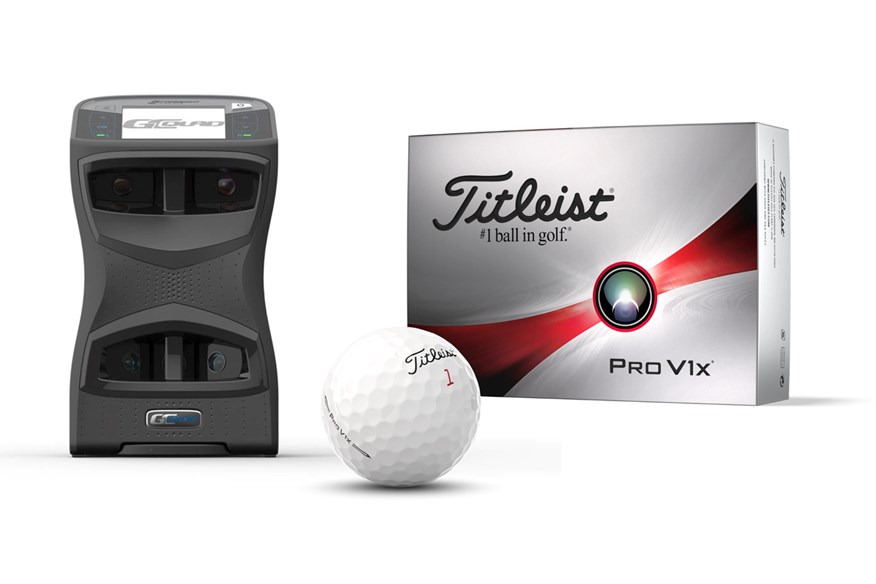
Why do we use a Titleist Pro V1x golf ball?
It would be easy to use just one test golf ball brand every year, but that inevitably leads to criticism for being too closely aligned to one manufacturer, especially if that brand’s equipment performs particularly well. To ensure fairness we like to switch manufacturers for the Top Gear test ball each year. For 2024 we’ve used the Titleist Pro V1x.
The brand revealed the latest Pro V1x model in 2023, and Titleist’s Senior Director of Golf Ball Research and Engineering, Mike Madson says “Consistency means when a golfer tees up a Pro V1 or Pro V1x, every properly executed shot they make is going to deliver the performance they expect and the performance they trust.”
Thanks to the Titleist Pro V1 and Pro V1x mopping up mountains of tour wins across all global tours we know the model is trusted by the world’s very best.
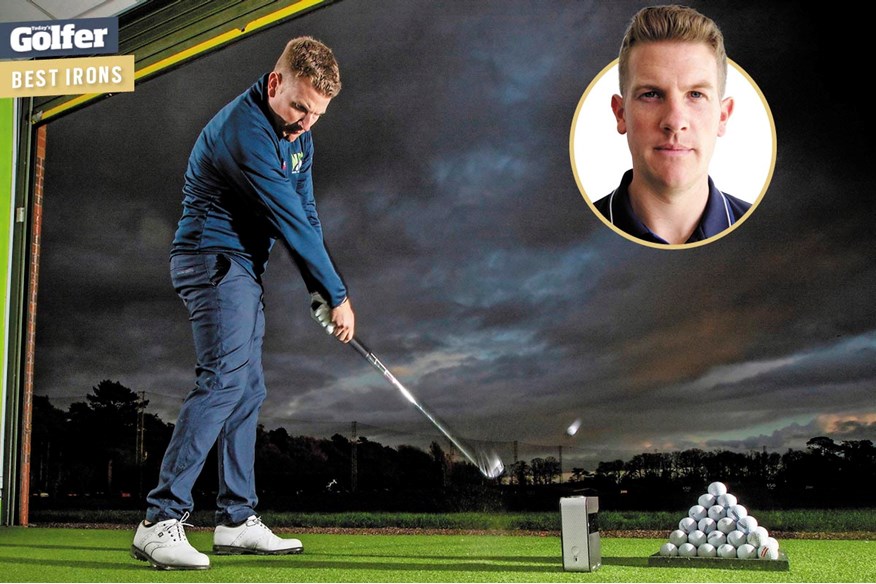
Why do we use a pro tester?
Speak to any golf club engineer about product testing and they all talk about needing a repeatable, reliable strike to offer any sort of valuable comparison. So, whilst we accept not all of the equipment included within our tests was designed for our test pro, what our data shows is a great comparison of how clubs in each particular category differ, which is hugely valuable in helping you narrow your choice as a consumer.
In 2024 we’ve tested 83 different 7-irons, during which our test pro missed a target green at 170 to 200 yards no more than a dozen times. He got a hole-in-one, lipped out, and hit the flag several times, he also loves hitting golf balls all day long. In short, Neil Wain is the perfect club tester due to his consistency in delivering accurate and reliable comparative data.
We would of course always recommend attending a proper fitting session, to ensure any purchase is tailored to your game.
Watch: Mizuno JPX925 Irons Test
Buying advice & FAQs
What are the most forgiving Mizuno irons?
If you want maximum forgiveness from a Mizuno iron, we’d recommend you test the Mizuno JPX925 Hot Metal and the JPX925 Hot Metal HL. They both offer plenty of forgiveness but the HL offers higher launch which will help flight shots for maximum carry distance at slower swing speeds. If your swing speed hovers around 75mph you’re likely to see a benefit in switching to the HL.
What are the best Mizuno JPX irons?
The best Mizuno JPX irons will depend on the golfer. The JPX923 Tour is the preferred choice of really good golfers and can be found in the bag of some tour pros; the JPX925 Hot Metal range (including Hot Metal Pro and Hot Metal HL) offer more forgiveness, while the JPX923 Forged will be a great option for decent golfers wanting a forged head and a good combination of distance and control.
Do any pros use Mizuno irons?
One of the biggest credits for Mizuno has always been the number of non-contract pros who choose to use Mizuno irons out of everything available. Paul Casey and former world number one Luke Donald are long-term Mizuno devotees, while Brooks Koepka won all four of his Majors using Mizuno irons before signing a deal with Srixon.
Which Mizuno irons are easiest to hit?
The Mizuno JPX925 Hot Metal HL will be the easiest Mizuno iron to hit, particularly for golfers who lack speed and/or struggle to get their iron shots launching high enough.
What does JPX stand for?
The JPX in Mizuno stands for “Japan Performance Extreme”.
It was a name developed for the Japanese market as a way to introduce more aggressive, distance-driven, often cast irons to a different segment of the market than their MP (Mizuno Pro) line.
About the author

Simon Daddow – Today’s Golfer Equipment Editor
Having tested and played more than 10,000 clubs in his life, what Simon doesn’t know about golf clubs isn’t worth knowing.
He spent a large part of his career as a golf club maker and product development manager, and has worked in the golf industry for more than 30 years. He joined EMAP Active (now Bauer Media) as Equipment Editor in 2006 and has worked for both Today’s Golfer and Golf World.
You can contact Simon via email and follow him on Twitter for loads more golf equipment insight.
-
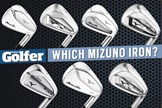 We test Mizuno's 2022 irons to find out which is best for you.
We test Mizuno's 2022 irons to find out which is best for you.
-
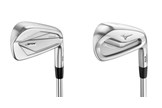 The cavity detailing of the Mizuno JPX923 Tour and Pro 243 Players' Irons
The cavity detailing of the Mizuno JPX923 Tour and Pro 243 Players' Irons
-
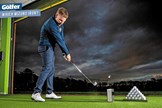 Today's Golfer pro Neil Wain tested the Mizuno irons.
Today's Golfer pro Neil Wain tested the Mizuno irons.
-
 Mizuno Pro 221 irons.
Mizuno Pro 221 irons.
-
 Mizuno Pro 223 irons.
Mizuno Pro 223 irons.
-
 Mizuno Pro 225 irons.
Mizuno Pro 225 irons.
-
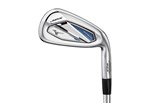 Mizuno's Slower Speed Higher Loft JPX925 Hot Metal HL iron
Mizuno's Slower Speed Higher Loft JPX925 Hot Metal HL iron
-
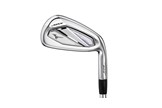 Mizuno's Game Improver Iron - The JPX925 Hot Metal
Mizuno's Game Improver Iron - The JPX925 Hot Metal
-
 Mizuno's three 2024 Players' Distance Irons - The Pro 245, JPX923 Forged and JPX925 Hot Metal Pro
Mizuno's three 2024 Players' Distance Irons - The Pro 245, JPX923 Forged and JPX925 Hot Metal Pro
-
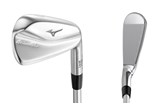 The Mizuno Pro 241 iron back and in the play position
The Mizuno Pro 241 iron back and in the play position
